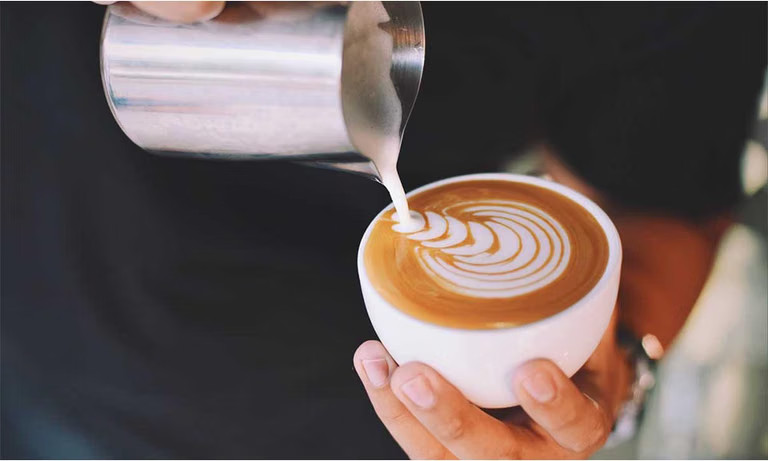
Latte Art Pro Milk Jug
by Gianni Cocco


What is the perfect milk pitcher for a barman or barwoman who wants to become a cappuccino or Latte Art professional?
We asked an expert in the field. Simone Celli started out as a barista: today, he is a trainer for barista training and, above all, for Latte Art. He is a certifier for the Latte Art Grading System, an international certification system for Latte Art. Over the past six years, he has taught countless students at Espresso Academy.
Let’s start with something fundamental: for your own café, you should choose “THE milk pitchers,” plural.
It’s simply not possible to have only one pitcher to properly work with a raw material like milk. You will therefore need several milk pitchers of different sizes. This will allow you, in your daily workflow, to steam the milk only once and only the amount you need for the orders you receive. You’ll need larger pitchers when the order is for three or four cappuccinos, and a smaller one when you have a single cappuccino or macchiato espresso. You’ll need several professional pitchers for each size: it’s always better to have a few extra pitchers than to be without one when you need it most.
To get a better product, milk preparation must start with a cold, clean pitcher. And unfortunately—or fortunately—we don’t always have the time to rinse our pitchers between one steaming and the next.

The size of the pitchers is important and should also be chosen according to the size of the cups and beverages we’ll be serving. A good barista selects pitchers based on the sizes of their cappuccinos, lattes, and macchiato espressos.
Then, it’s essential to choose pitchers with a shape designed for milk steaming, usually truncated-cone shaped with a wider base than top. They must be made of stainless steel, a material that is easier to clean, with optimal thermal conductivity and virtually indestructible.
Pitchers must also have a spout, that is, a pointed tip that allows you to control the milk flow throughout the pour—both for those who want to try their hand at Latte Art and for those who simply want to offer a well-presented classic Italian cappuccino.
There are many types on the market. The Motta pitchers are certainly among the most widely used, and they’re the ones I feel comfortable recommending to anyone approaching the barista profession.

As we also see in our Latte Art courses, when it comes to basic designs—building the foundations of our art, like a heart, a leaf, or a tulip, and even some slightly more advanced designs—Motta pitchers, as we mentioned earlier, are more than enough. They work beautifully. When we start aiming higher and want to create designs with more elements, we need greater sensitivity, both in the pitcher and in our hand.
Having a more advanced pitcher allows us to create real masterpieces.
For that reason, we’ve selected a few pitchers on Caffèlab, designed by a colleague and friend of mine, Gianni Cocco, a true professional in the coffee world.
He designed this shape to help achieve excellent results more easily, although Latte Art is never easy and always requires a lot of practice.
In addition to giving a touch of color to the counter, having pitchers in different colors helps us recognize them quickly for different uses and drinks: for example, if in my café I serve cappuccinos made with different types of beverages, I’ll be able to identify them immediately.
The only two pieces of advice I’d give are: that the coatings should be of good quality (like the Motta pitchers we have in the CaffèLab catalog) to avoid hygiene issues, and most importantly, never wash them in the dishwasher, because over time the coating tends to wear off.

Let’s say that plant-based drinks are one of the fastest-growing trends in today’s coffee scene. In recent years, it’s become very common to find cappuccinos made with soy, oat, or almond drinks in cafés.
Many companies are now developing product lines specifically designed for coffee preparation, meaning they can emulsify like cow’s milk while keeping a pleasant taste that pairs well with a good espresso.
Because of this, we recently added to our Caffèlab catalog a line of pitchers that have a silicone band on the lower part, which displays the type of beverage inside using different colors and labels.
This helps us avoid mistakes that can cause problems for those with allergies, and prevents cross-contamination, since the pitchers are used exclusively for their designated purpose. It also helps us communicate clearly to the customer our care in preparing cappuccinos with alternative beverages.